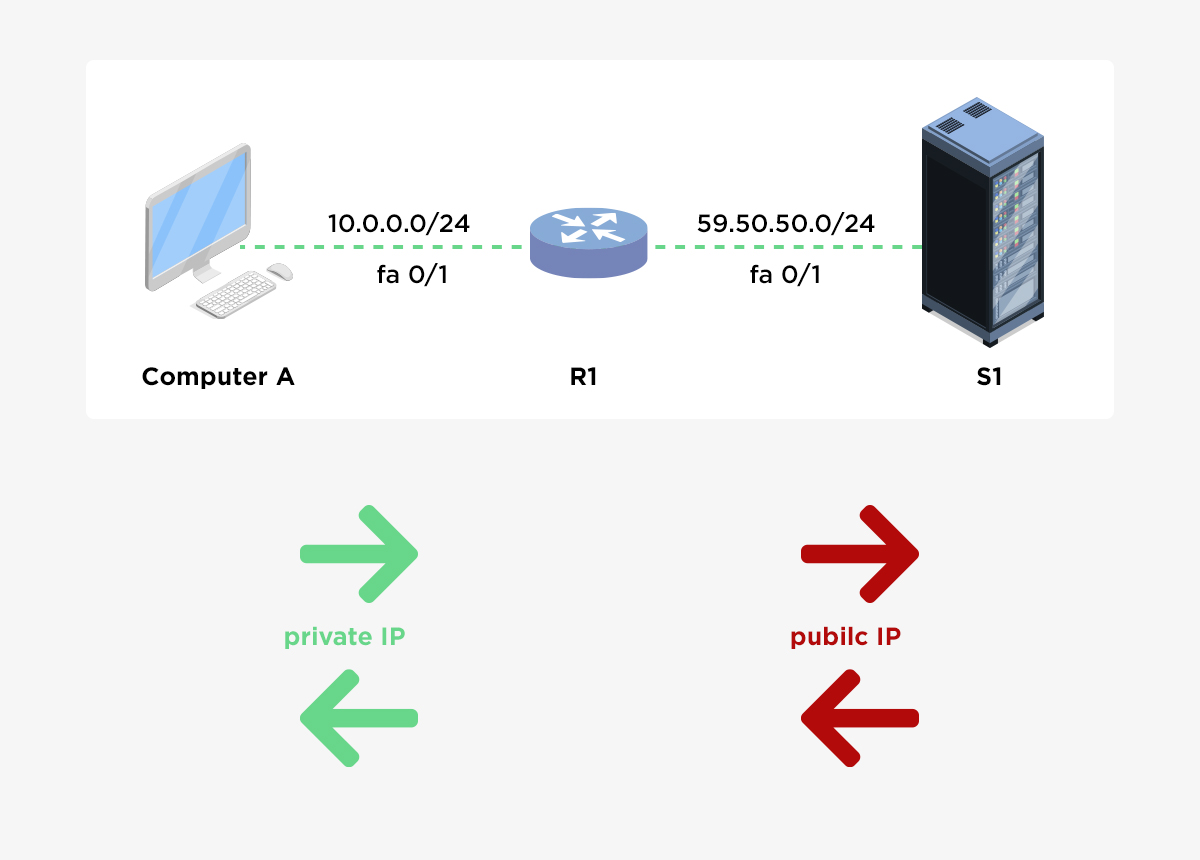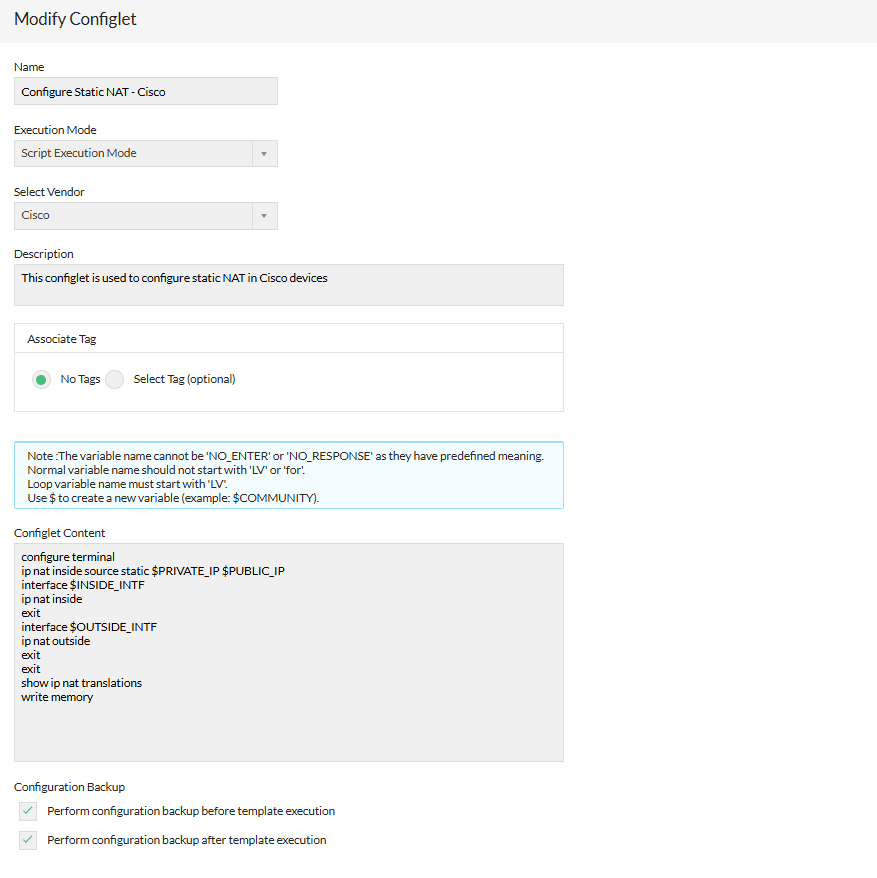With static NAT, routers or firewalls translate one private IP address to a single public IP address. Each private IP address is mapped to a single public IP address. Static NAT is not often used because it requires one public IP address for each private IP address.
To configure static NAT on Cisco devices using Network Configuration Manager, you can create the corresponding Configlet commands and push them in multiple devices.

If you don't have NCM installed, please click here to download and install the application.
Router#configure terminal
Enter configuration commands, one per line. End with CNTL/Z.
Router(config)#
Router(config)#ip nat inside source static 10.0.0.2 59.40.40.1
Router(config)#interface fa0/0
Router(config-if)#ip nat inside
Router(config-if)#exit
Router(config)#interface fa0/1
Router(config-if)#ip nat outside
Router(config-if)#exit
Router(config)#exit
Router#
Router#write memory
Building configuration... [OK]
Router#
The corresponding configlet can be created in NCM application as shown in below screenshot.

Also you can click the below button to download the Configlet as XML and import it into NCM application using file import option.
| Configlet Name | Configure Static NAT - Cisco |
|---|---|
| Description | This configlet is used to configure static NAT in Cisco devices. |
| Execution Mode | Script Execution Mode |
| Configlet Content |
configure terminal
ip nat inside source static $PRIVATE_IP $PUBLIC_IP
interface $INSIDE_INTF
ip nat inside
exit
interface $OUTSIDE_INTF
ip nat outside
exit
exit
show ip nat translations
write memory
|